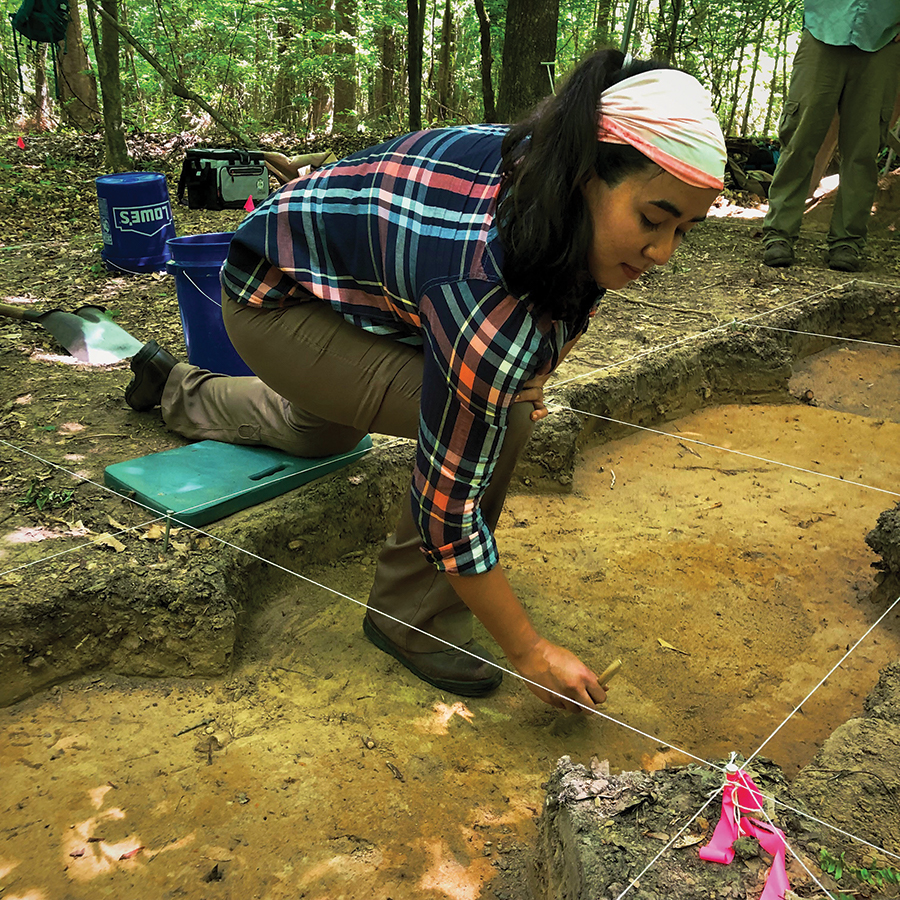Hidden histories
Anthropology grad student applies STEM techniques to uncover forgotten societies

Tara Skipton was already engaged in studying past civilizations when she arrived at Florida State University in 2019.
The second-year anthropology graduate student had earned a bachelor’s in anthropology and geography from the University of Florida before arriving in Tallahassee, but her area of focus crystalized once she began working with her adviser, assistant professor of anthropology Jayur Madhusudan Mehta.
Among Mehta’s specialties is researching French and Spanish colonization of the American South, and he quickly made a case for Skipton studying one of his favorite regions — the Mississippi River Delta.
“I wasn’t sold at the beginning,” Skipton said. “One of the ways Dr. Mehta described it to me was that New Orleans isn’t like any other Southern city. It’s more like a New York City in the South with its Caribbean, French, Spanish and English cultural influences.”
Today, her work concentrates on the period between 1780 and 1810, when the Spanish occupied the delta and slavery fueled an economic boom on coastal Louisiana plantations. Where there is slavery, there is resistance, and Skipton’s research involves Maroon settlements, communities of people fleeing enslavement who succeeded in establishing societies in remote areas where they could not easily be found.
Skipton uses her skills in spatial analysis, Geographic Information System mapping, and archaeology to study migration, movement, and clandestine escape in and around the marshy, swampy plantation landscapes near New Orleans, and propel new discoveries.

“The story Tara will tell about Maroon settlements and sites is that within slavery, human beings made choices and had agency,” Mehta said. “When people escaped, they made the choice to leave and fight for their lives amid the alligators and snakes in the swamps of Louisiana.”
Just joining one of these communities required courage and complex planning, she said. Decisions were hard, and carrying out plans was even tougher. Without efficient means of communicating, enslaved people and those in Maroon settlements had to develop ways to share information. What they came up with required extraordinary cooperation and coordination.
“There was an extensive communication and trade network among Maroons throughout coastal Louisiana,” Skipton said. “There was an intricate information network connecting those enslaved on plantations, Maroons, and free people in the city, especially east of New Orleans. They warned each other about potential raids and passed along where to find guns and ammunition.”
Locating the Maroons’ means of escape is a challenge for a 21st-century researcher. Skipton uses least-cost networks, which she describes as “Google Maps for areas with no roads.” Such networks allow researchers to plot routes ancient civilizations used for movement and discover where they settled.
“How are you going to find archaeological sites that are supposed to be hidden?” Skipton said. “I’m plotting arbitrary points around my study area … how would I get from Point A to Point B? What I want to do for my Ph.D. is understand the relationship between space, power, and methods of self-liberation among these Maroon sites.”
Much of Skipton’s research has been centered on people enslaved at one plantation in coastal Louisiana, but she is now enlarging her area of study to tell a broader story.
“She’s taking it in a new direction,” Mehta said. “She’s really building on this work in a unique way. Ultimately, it won’t be about a plantation specifically. It will be about the landscapes of coastal Louisiana.”
Among the revelations from this summer’s social justice movement in the U.S. is that students don’t learn much about African-American history, and what does appear in textbooks was penned by white scholars who don’t fully understand the struggle of slavery.
Skipton, who went to high school in Pensacola, recognizes those gaps in the system and sees the value in studying marginalized communities. She plans to become a college professor once she earns her master’s degree and doctorate.
“In my history classes, there were a couple of pages about slavery and that was it,” she said. “It’s a question of public education and how much we want to go into the hard truths about slavery. We need to look critically at our past to improve our future.”

